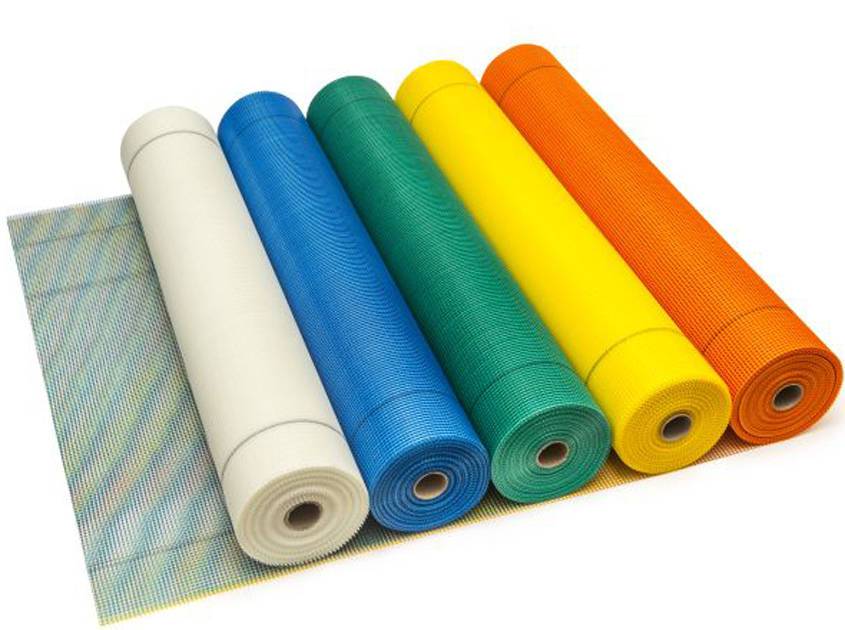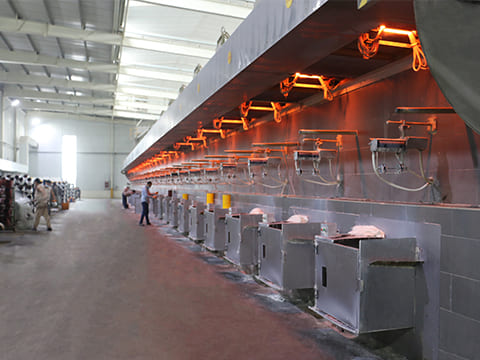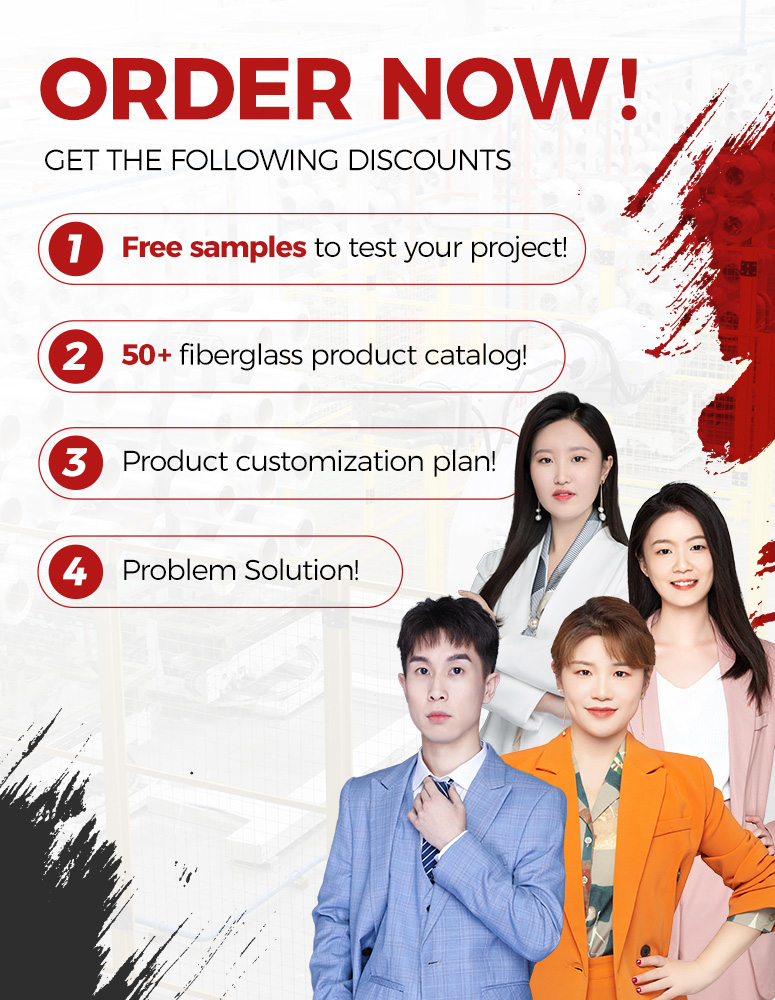
Introduce
Choosing the right building materials is one of the key factors for the success of any engineering project, and among them, Alkali Resistant Mesh and polyester mesh have attracted much attention as one of the main options for structural reinforcement and reinforcement. They play a vital role in construction, engineering and other industries, but many people may be confused when faced with these two mesh fabrics.
Both alkali resistant mesh tape and polyester mesh have unique physical properties and advantages and disadvantages, so a thorough understanding of their characteristics before making a choice is critical to ensuring the success of your project. In this article, we will conduct a detailed analysis of these two mesh fabrics and delve into their physical properties, durability, scope of use, environmental adaptability, and cost factors so that readers can have a more comprehensive understanding of their relationship. difference.
What is Fiberglass Mesh Made Of?
Fiberglass mesh is a multifunctional material mainly composed of glass fiber and polymer resin. Fiberglass is first woven into a loom-state mesh and then impregnated with coatings to create a strong and durable material that strengthens and stiffens the structure and increases the material’s properties to withstand a variety of applications. The combination of these components gives fiberglass mesh roll exceptional strength and flexibility, making it ideal for a wide range of uses.
Characteristics of polyester mesh cloth
Physical properties
Polyester mesh uses polyester fiber as its main raw material, which makes it lightweight, flexible, and easy to bend. Its fine fiber structure makes the surface of polyester mesh cloth smooth, which is beneficial to the construction and surface coating of the material. In addition, polyester fiber has good acid and alkali resistance and is not easily corroded by chemical substances, increasing its applicability in different environments.
Durability and strength
Polyester mesh excels when it comes to durability. It has good weather resistance and anti-aging properties and is not easily affected by natural factors such as sun and rain. At the same time, polyester fiber itself has high strength, making the mesh cloth show good performance in withstanding external force, stretching and tearing. This strength and durability enable polyester mesh to play a long-term and stable role in construction, roads and other projects.
Scope of use and environmental adaptability
Polyester mesh cloth has a wide range of uses and can be used in many fields such as civil engineering, building waterproofing, and road paving. Due to its weather resistance and chemical resistance, polyester mesh is particularly suitable for use in harsh natural environments, such as seaside buildings, high temperature and rainy areas, etc. Its environmental adaptability makes polyester mesh a versatile and reliable building material.
Cost factors
Compared with other materials, polyester mesh has lower production costs, which reduces the project cost to a certain extent. Its lightweight properties also help simplify the construction process and reduce the cost of labor and mechanical equipment. Therefore, polyester mesh is often an affordable option when cost considerations are taken into consideration.
Characteristics of fiberglass mesh
Physical properties
The main component of AR Fiberglass Mesh is glass fiber, and its physical properties are different from polyester mesh to a certain extent. Glass fiber itself has the characteristics of high strength, rigidity and high temperature resistance. Its surface fiber structure is rougher, which helps to increase the adhesion of coatings and glues. Due to its transparency, AR-glass fiber mesh can also be used as a substitute for glass materials in some special occasions to achieve transparent repair and reinforcement effects.
Durability and Strength
Fiberglass mesh excels in durability and strength. Its high strength makes it a strong and durable building material, able to withstand large stretches and resist tearing. In addition, the corrosion resistance of glass fiber enables it to perform better in humid, acid and alkali environments, increasing its application range in different environments.
Scope of use and environmental adaptability
Fiberglass mesh is widely used in construction and engineering fields, especially where high strength and durability are required. Its high temperature resistance allows blue fibreglass mesh to maintain stability in high temperature environments. Due to its opacity, fiberglass mesh can also be useful in projects where privacy is required.
Cost factors
Compared with polyester mesh, the production cost of fiberglass mesh is slightly higher. The manufacturing process of glass fiber itself involves complex processes such as high-temperature melting and fiber drawing, which results in relatively high production costs. However, considering its excellent strength and durability, sometimes its cost-effectiveness is still higher in some projects that require higher quality.
In summary, concrete mesh cloth is widely used in the construction field due to its unique physical properties, excellent durability and strength, wide range of use and environmental adaptability, and relatively high production costs. When selecting building materials, it is necessary to comprehensively consider the characteristics, advantages and disadvantages of fiberglass mesh based on specific project needs and budget to achieve the best engineering results.
Comparative analysis of fiberglass mesh and polyester mesh
- Fiberglass mesh:
Lightweight yet strong, with high tensile strength.
Rigid structure, suitable for projects requiring more rigid support.
Not easy to deform, suitable for scenes with high surface flatness requirements.
- Polyester mesh:
It is soft and has excellent plasticity, suitable for construction of complex surface shapes.
Higher elasticity and better adaptability to structural changes.
Unique advantages for projects that require local repairs or curved surfaces
- Fiberglass mesh:
High strength and tensile resistance, can effectively resist external pulling force.
It has strong corrosion resistance and can adapt to different environmental conditions.
Suitable for projects with strict requirements on structural stability.
- Polyester mesh:
Excellent durability and strength to maintain performance over long periods of use.
It is elastic and deformable, and has better adaptability.
Corrosion resistance makes it suitable for different climate and geographical conditions.
- Fiberglass mesh:
It is widely used in the reinforcement of concrete, interior and exterior wall insulation and other materials.
Excellent performance in high temperature and humid environments and strong adaptability.
- Polyester mesh:
Ideal for projects requiring spot repair or curved surfaces.
More suitable in scenarios that require higher surface flatness
- Fiberglass mesh:
The manufacturing cost is relatively low, making it an economical option.
Provides stable performance and is attractive for projects with tight economic budgets.
- Polyester mesh:
Typically have relatively low manufacturing costs and are an affordable option.
May be more cost-effective in projects where softness and moldability are required.
In Conclusion
In the analysis of the advantages and disadvantages of how to choose Concrete reinforcing mesh and polyester mesh, we have an in-depth discussion of the physical properties, durability and strength, scope of use and environmental adaptability, cost factors, etc. of these two building reinforcement materials. difference. Through comparative analysis, we draw the following conclusions:
External rendering mesh is suitable for projects that have strict requirements on structural stability due to its lightweight yet strong properties, while performing well in high temperature and humidity environments. Its affordable cost makes it ideal for delivering solid performance on a limited budget.
Polyester mesh stands out for its softness and malleability, making it suitable for projects that require more design flexibility, such as curved structures and local repairs. Its relatively low manufacturing cost makes it more cost-effective in projects with tighter budgets.
When choosing the mesh that’s right for you, you need to consider several factors, including project needs, budget constraints, environmental conditions, and long-term investment considerations. Weighing these factors allows us to make informed decisions based on the requirements of the specific project, ensuring that the materials selected will provide reliable performance over the long term while meeting the needs of design and construction. Whether you choose fiber glass mesh or polyester mesh, you should make a flexible and wise choice based on the specific situation to ensure the successful implementation of the project.





